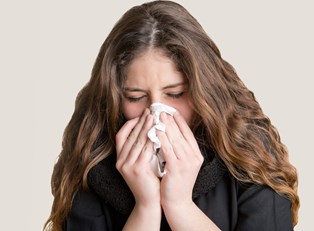Sinusitis, which is synonymous with a sinus infection, is the medical term for inflamed sinuses. Sinusitis is usually accompanied by an incredible amount of facial pain, congestion, and thick mucous secretions. The Cleveland Clinic reports that approximately 40 million Americans are affected by sinusitis yearly, and the National Institutes of Health state that women are twice as likely to suffer from it than men.
Understanding the Sinuses
Within your skull, especially around your nose and eyes, your sinuses consist of four pairs of hollow spaces filled with air. When healthy, these mucous-lined spaces assist your nasal passages in warming, moistening, and filtering the air you breathe. Sinusitis occurs when, for some reason, the openings to the sinuses become plugged and prevent mucous drainage. This causes a buildup of air pressure within the sinuses, increased mucous production, and inflammation or swelling. The effects of sinusitis may cause redness, heat, pain, swelling, and tenderness in the sinus regions.
Sinusitis may affect any of your sinuses, which are described below:
- Frontal, located above your eyes in the brow area and behind the forehead
- Ethmoid, located behind the bridge of your nose and between your eyes
- Maxillary, located just behind your cheek bones and upper jaw bone
- Sphenoid, located deeper in your skull, behind the ethmoid sinuses, in your upper nose and eye region
Types of Sinusitis
According to the National Institute of Allergy and Infectious Diseases (NAID), there are four main types of sinusitis, which are characterized by their duration or frequency:
- Acute, lasting up to four weeks
- Subacute, lasting up to 12 weeks
- Chronic, lasting more than 12 weeks and up to months or years
- Recurrent, occurring several times within one year
Causes of Sinusitis
Sinusitis is also often classified by the cause of the infection. According to the Centers for Disease Control and Prevention, the following are the most common sources of sinusitis:
- Virus
- Bacteria
- Fungus
- Allergies
- Environmental pollutants
- Anatomical abnormalities or injuries
- Immune insufficiency
- Pre-existing health conditions
In general, sinusitis affects more adults than children. The two most common types of sinusitis are acute and chronic. The primary cause of acute sinusitis is the common cold, a virus. Chronic sinusitis is also called chronic rhinosinusitis. Longer lasting than acute forms, chronic sinusitis may often be caused by underlying chronic illnesses such as asthma, allergies, or an immune deficiency. Chronic sinusitis is also more likely to require surgery than acute sinusitis.



